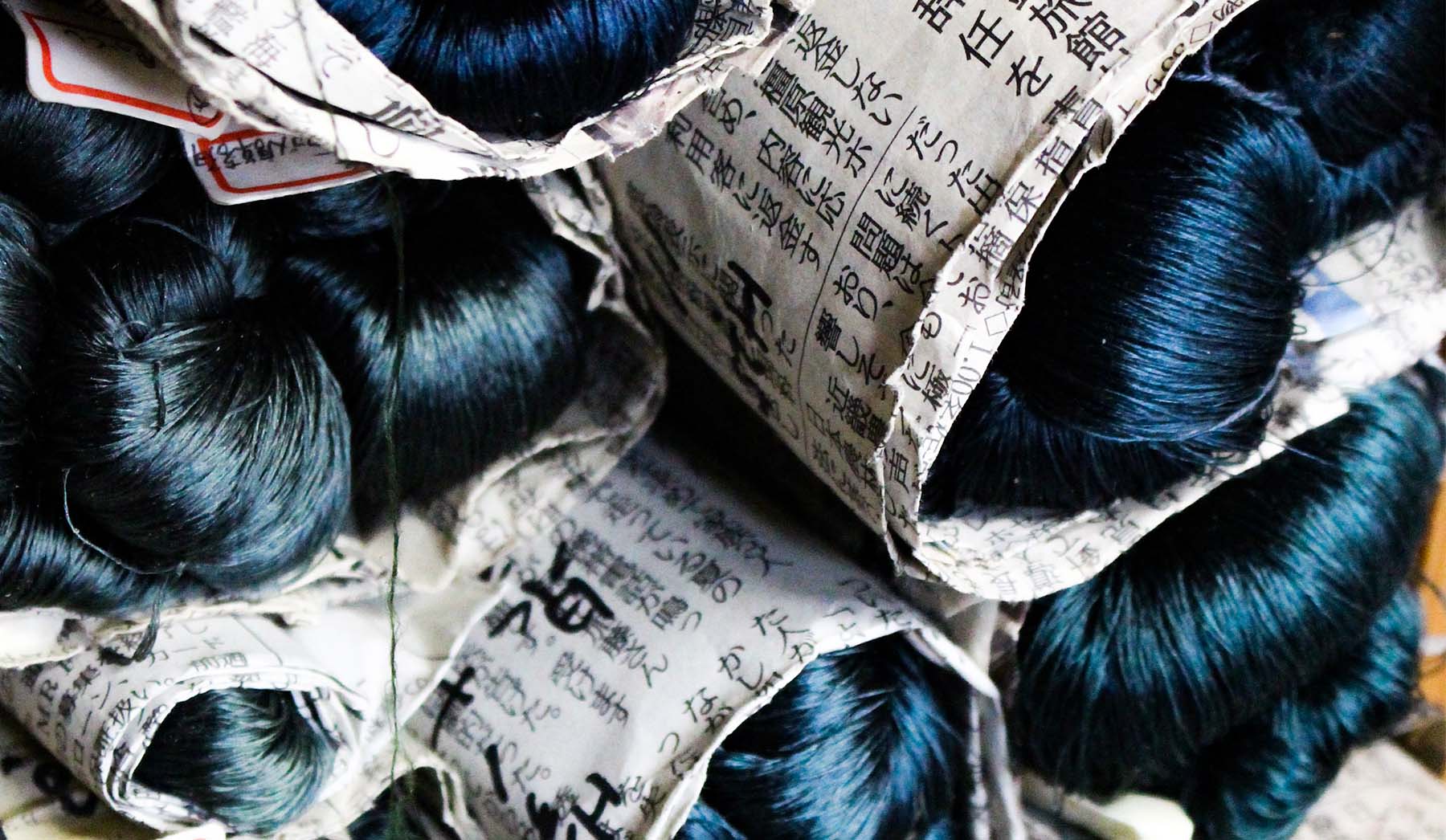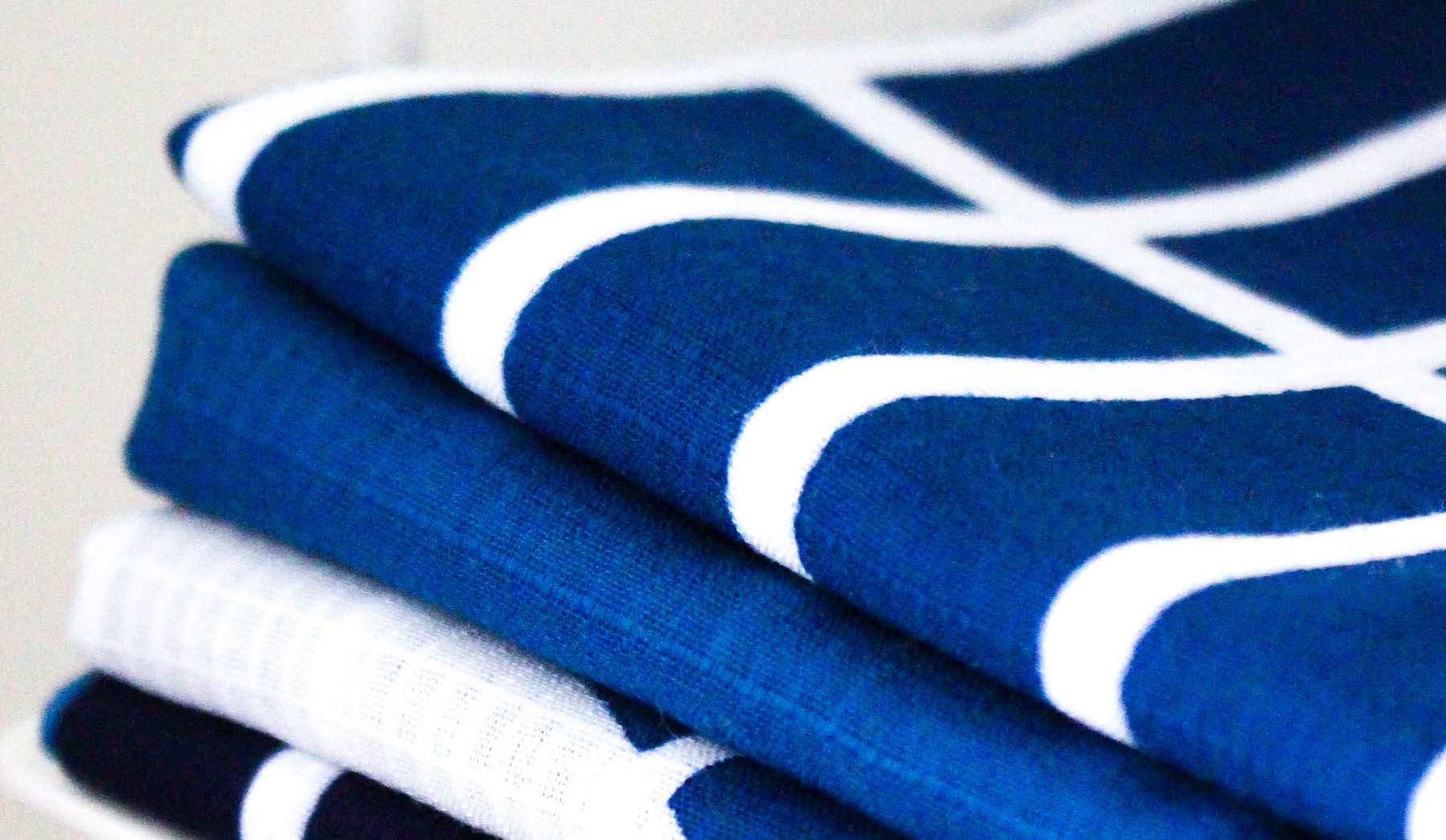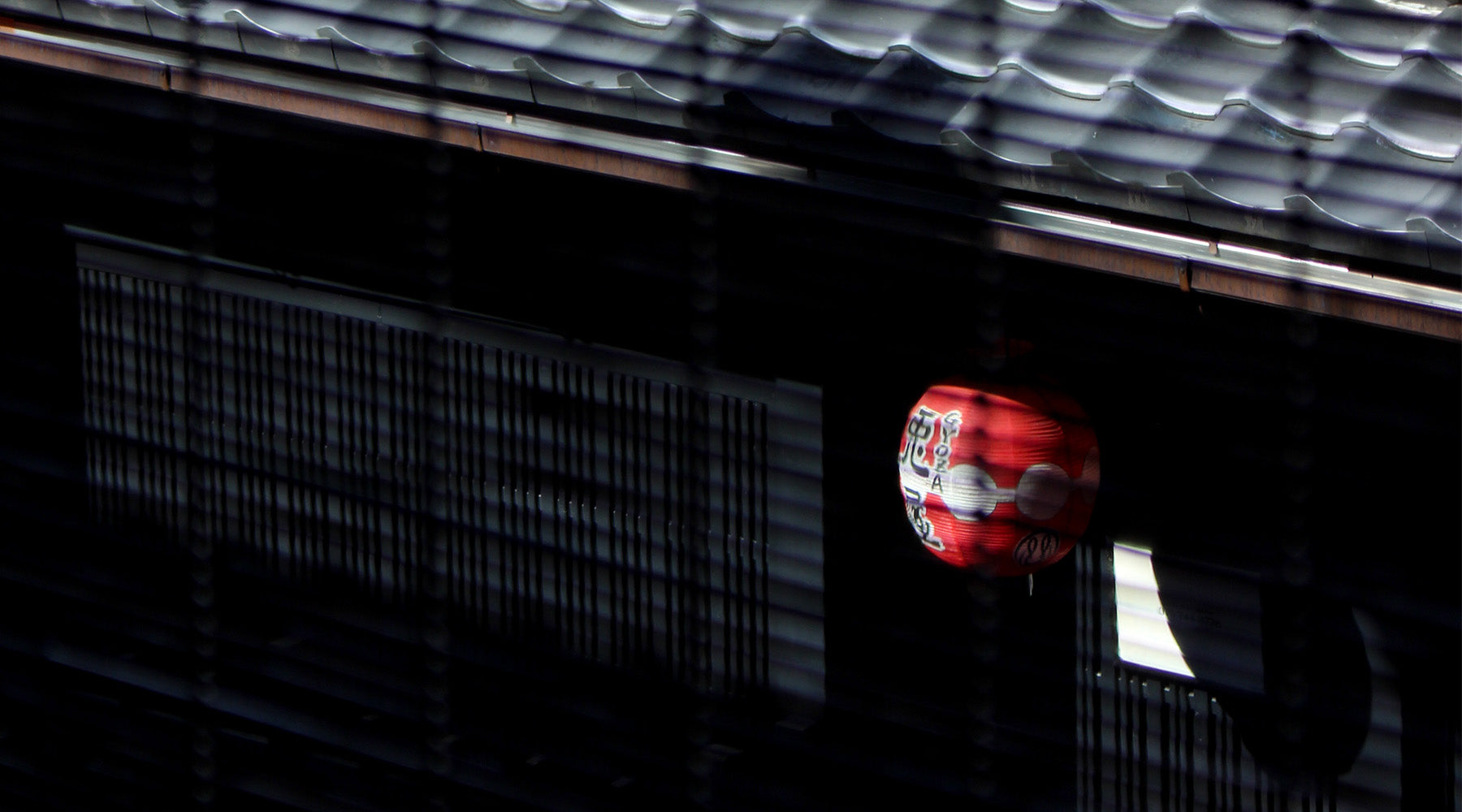
When Japanese craft traditions meet French creativity.
Laurence Vouillemin is the talented designer behind the brand Ikémato. We met on Instagram, obvious encounter resulting on a solid friendship, which beyond sharing the same first name links Paris with Marseille where she lives, and our immense love for Kyoto. For Atelier Ikiwa she has created a small series of vintage indigo textile pochettes, which showcase traditional Japanese craftsmanship half-way between sewing and origami, preservation and reuse of vintage textiles, and purity of creative work. Here is the portrait of Laurence and her quest in Kyoto.
The book that started everything
The paths of life, studies, and careers, from time to time, show signs on their winding roads, silent or obvious, which, if seen in time, can change everything. For Laurence, it was a book, at a time when a thousand questions were running through her head and when the idea of a reorientation towards what had long been her passion, sewing, was beginning to make its way into her heart and head.

This book, by Japanese Tomoko Nakamichi, "Pattern Magic", opened up a whole world of pattern-making, volumes, and the art of creating, inspired by forms in nature and geometric shapes, textile pieces that borrow as much from sculpture as from sewing. It was a revelation, opening the doors to unknown and mysterious worlds.
In Kyoto, to discover and learn
Laurence decided to go and meet Nakamichi san in Kyoto, where she teaches at university. But before that, she had to train, establish her credibility in sewing, and learn Japanese. She left her comfortable job, enrolled as a free candidate in a CAP (vocational training certificate) in Fashion, loose-fitting clothing, which she obtained two years later, and took intensive Japanese courses.
In 2015 she was in Kyoto, Japan, for the first time, where she lived for several months during two long stays. In Kyoto, Laurence stayed with an elderly weaver in an old machiya in Nishijin. Nishijin has been the district of weavers and dyers, of silk, of kimono making for 1000 years, created to accompany the needs of the Imperial Court of Kyoto, and has remained since a district of reference where we continue to hear the looms vibrating with their characteristic clattering even if many have disappeared with mechanisation and industrialisation.

Laurence was not able to meet Nakamichi san after all, but it is as if her silent presence opened the doors of Kyoto. She learnt the very strict technique of sewing kimono, bags, and also took origami classes, among Japanese students and demanding professionals, learning nuances and rigour, overcoming the language barrier.
Kimono left-overs, the revealed treasure
The weaver with whom Laurence lived during her long stays in Kyoto was an old lady, and could no longer see well enough to operate her looms, whose silence filled the old machiya and their silhouettes continued to tell stories of the past, of dancing fingers, of hours of attention, of perfect work, of sumptuous kimono that came to life through this effort. In the middle of the now unused thread spools, treasures appeared, remnants of weavings, small pieces of fabric that the weaver entrusted to Laurence.

During her sewing classes, kimono left-overs also beginned to enrich this collection of patterns, materials and colours and a wider quest commenced, fascinating, in search of fabrics, sometimes only small pieces but whose pattern brings vibration, leading her to survey the markets and antique shops of Kyoto, Tokyo and elsewhere.
These marvels are the material from which Laurence draws inspiration for her creations, each one telling a story, both universal and personal, of the things we cherish, of the reuse not to lose, of the transmission from one continent to another.
Since Kyoto, creation from tradition
It is the joint learning of kimono sewing and origami, highlighted by Nakamichi san's book, that stimulates Laurence's creativity and leads her to imagine how to give volume and hold to soft and flat textile. Trials starting with paper, through the work of proportions, of balance, until she finds her solution, precious gestures that through the play of folds, of reversals, of mysterious seams, give to her creations these so unique and elegant forms.

For Atelier Ikiwa, Laurence reclaimed left-overs indigo textiles from vintage Japanese kimono she had kept preciously. Each piece created from these left-overs is either unique or only exists in limited quantities, but never quite the same. Pieces of memory, between men's kimono, children's kimono, elegant light women's kimono, projecting us into life stories of those who wore them and linking us to them, beyond oceans and cultures, because beauty is universal and always moving.
Small pochettes for everyday life, to slip into your bag or to leave in evidence at home, to deposit a few treasures or secrets and to let us become, in turn, the depositary of these stories of memory and transmission. Pochettes to be discovered in the eshop.




